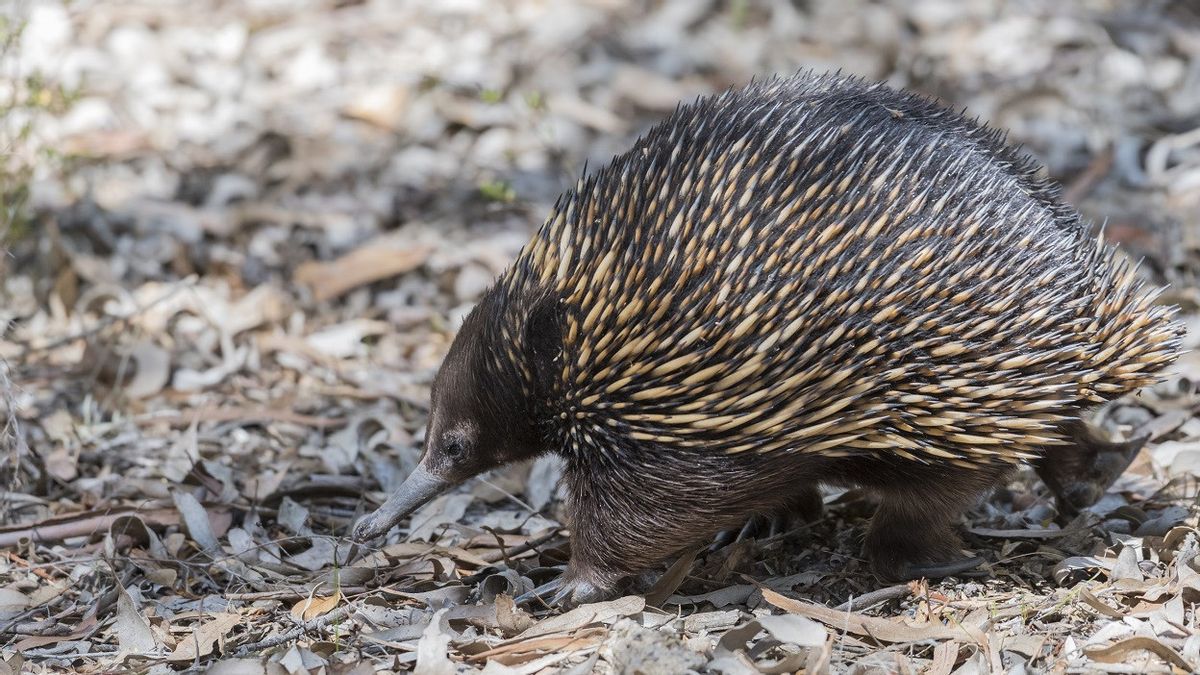JAKARTA - Sydney's Taronga Zoo, Australia introduced a rare short-beaked echidna puggle on Friday, May 7, born to mother Gunyi at its breeding facility about seven months ago.
Puggle, the tenth child born at Sydney zoo, has not been named because his gender has not been identified, the zoo said. At this stage it is only beginning to look like a small echidna, also known as a prickly ant eater.
"Echidnas, one of only two egg-laying mammals, are difficult to breed at the zoo because they have complex courtship rituals with males that are only needed at very specific times, taronga Conservation Society Australia, which runs the zoo, told Reuters.
It is rare to see a newborn echidna puggle, the moment in which they spend the first few months of their lives in the deep burrows made by their mothers. This one will be exhibited with other zoo echidnas in the coming months, the zoo said.
"The little puggle is still quite shy and spends most of his time studying natural echidna behaviors such as digging and foraging," a zoo spokesman said.

Meanwhile, the treehugger, which looks like a cross between a hedgehog, a hedgehog and a trenggiling, is a completely different creature. Together with platypus, both are derived from ancient animal clades called monotremata or egg-laying mammals.
Researchers are still learning new things about this strange but charismatic little animal. For example, they've just discovered the secret superpowers that echidnas have.
For example, the ability to survive forest fires, and those skills might help explain why mammals could somehow live through asteroids that destroyed dinosaurs.
The capability was first recognised in 2013, after a catastrophic fire engulfed Warrumbungle National Park in eastern Australia, which many of these creatures call home. Julia Nowack, a researcher based at the University of New England in New South Wales at the time, noticed that although most of the wildlife was destroyed by fire, the echidna population in the area looked as strong as ever.
How did echidna escape the flames? To investigate, Nowack and his colleagues used controlled burns carried out in areas known to house small populations of echidnas in Western Australia. Echidnas are trapped and implanted with small temperature loggers, along with GPS trackers glued to thorns on the animal's back.

Researchers followed echidna for about a month before and after the blaze. What they found was amazing. The animals did not try to escape the fire. Instead, they just go to bed and sleep through it.
Echidnas are known to be able to hibernate the so-called suspended animation, in which they lower metabolism, and thus lower their body temperature as well. Adaptation allows them to conserve energy in times of scarcity, but how does it help them survive the fire?
First, it should be noted that echidnas choose safe and hidden places, such as hollow tree trunks or underground burrows, to put to sleep. This natural shelter certainly plays a role in helping to protect them from fire, but shelter alone is not enough as a protector, the fire can spin such burrows into the oven in a hurry.
The researchers believe that the decrease in body temperature that occurs during suspended animation protects the animal from increased heat. It actually makes them a bit fireproof.
"Post-fire, the echidna body temperature in the fire area was on average lower than the body temperature in the control group," Nowack said.
inaction also allows echidnas to sleep through times of scarcity that occur after large forest fires. That is, echidnas may be able to survive fire, but other creatures cannot. So, inaction also allows echidnas to save energy until their insect food returns.
In fact, the researchers even suspected, the state of suspended animation that allowed mammals to survive the asteroid impact that swept the dinosaurs off the planet. Echidna does represent the line of ancient mammals. And many scientists believe that suspended animation is a much more common trait in ancient mammals than it is today.
"In fact, the state of suspended animation was also used by other winners of (extinction events that killed dinosaurs), including turtles and crocodiles," explained paleontologist Tyler Lyson of the Denver Museum of Nature and Science in Colorado.
The English, Chinese, Japanese, Arabic, and French versions are automatically generated by the AI. So there may still be inaccuracies in translating, please always see Indonesian as our main language. (system supported by DigitalSiber.id)













